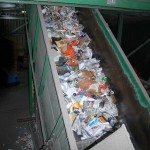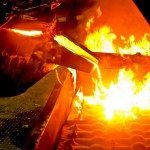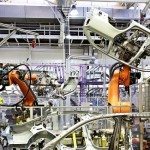Conveyor Belt is the carrying medium of a belt conveyor often called as conveyor belt. Conveyor system consists of two or more pulleys commonly called as drums with an endless loop of carrying medium that rotates about them. When one or both are powered the belt and the material on the belt will move forward.
Conveyors units are used on a daily basis all over the globe to safely move materials from 1 spot to another. Conveyor machine are movable or even immobile machine intended to handle products routinely from one position to another. It’s one of the most conventional procedures applied with regard to equipment transporting because of its unique ability to complete the operations continuously. Unlike other sorts of practices of materials and content transporting, like forklifts which will need to go back and forth from one area to another, the conveyor will allow for uninterrupted movement of supplies. Another benefit of conveyor is that they can be set up anywhere. Buyers can easily set them up upon buying the item. Using of conveyor is also safety compared to other machines, they are also less hazardous.
Today there are different types of conveyor belts that have been created for conveying different kinds of material available in PVC and rubber materials.
In order to choose the best conveyor belt, check the product, debris and build up. Must need to check these things as it needed to be part of standard preventive maintenance. If not inspected, this may lead to belt not connected to one side or the other.
Ensure conveyor frame is square and level up. When a conveyor square is out of level or square there is a possibility to move to one side or another, make sure to utilize the standard level, check also both the frame and the pulleys.
The belt consists of one or more layers of material. Many belts in general material handling have two layers. An under layer of material to provide linear strength and shape called a carcass and an over layer called the cover. The carcass is often a woven fabric having a warp & weft. The most common carcass materials are polyester, nylon and cotton. The cover is often various rubber or plastic compounds specified by use of the belt. Covers can be made from more exotic materials for unusual applications such as silicone for heat or gum rubber when traction is essential.
Belt Conveyors are used in self-unloading bulk freighters and in live bottom trucks. Belt conveyor technology is also used in conveyor transport such as moving sidewalks or escalators, as well as on many manufacturing assembly lines. Stores often have conveyor belts at the check-out counter to move shopping items. Ski areas also use conveyor belts to transport skiers up the hill.
There are no seams for product or contamination to attack the cleat at the base. These cleats are highly successful in recycling, woodworking, food processing, plastic manufacturing, and general industrial applications where strength and flexibility is a must. The food processing industry has adopted strict regulations with rubber belting in recent years. Modular belting is not always an option because the rigid and sharp cleats often damage fragile fruits and vegetables. The forgiving nature and brute strength of a Super Cleat is undeniable. In order to satisfy food inspectors, we have developed a urethane capped edge for the most sanitary incline conveyor applications.
What other questions can you think of to ask your local conveyor system supplier before choosing your conveyor system? At May Conveyor, belting is what sets us apart from others as we make our dies in-house by the May Tool & Die Group. We are a custom manufacturer of conveyor belting. We have pre-configured belts of various pitch & chain configurations for OEM & replacement applications as well as custom design capabilities. We provide belts for the metal working, recycling, machining, stamping, OEM, foundry, and mining industries. These precision components meet all automotive standards and is is how we have become known as a top quality supplier. Contact us today!








